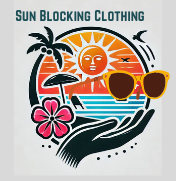
Learning how to spot the signs of tanning addiction in loved ones will enable you to be more supportive and understanding when a loved one finds themselves addicted to tanning.
No one starts out wanting to ruin their skin when they are young, but all too often that is the result of many in their attempts to get and stay tanned.
This article is to share some suggestions about how you can help your loved one. And to do that you will need to know how to spot the signs of tanning addiction in loved ones.
How To Spot and Address Tanning Addiction
A Guide to Supporting Your Loved Ones can help you have a place to start. Both in planning how to help your loved one, and how to address the subject to start with.
Tanning addiction is a topic that affects many individuals. The desire for a sun-kissed glow is common. Excessive tanning can lead to serious health and psychological consequences.
If you suspect a friend or family member might be struggling with tanning addiction, read on as we share some guidance for recognizing the signs.
We will also be sharing some ideas for starting a supportive conversation and seeking professional help when needed.
What Are the Signs of Tanning Addiction
The Signs of Tanning Addiction are obvious, once you know what to watch for. Does your loved one:
- Get Frequent Sun Exposure? Is a definite signal that your loved one may be in trouble. Is there an excessive amount of time outdoors, tanning, or in tanning beds? To the point, it’s not appropriate or safe?
- Compulsive Tanning? Do they seem to have the persistent urge to tan? Even when the person knows it can be harmful to their skin. Is their skin becoming too dark?
- Neglecting Family Gatherings or Friend Gatherings that have been important in the past. Or excusing themselves from meeting for lunch when the original idea was their idea.
- Emotional Dependency is usually exhibited in emotional distress or agitation when unable to tan for an extended period.
- Physical Symptoms to be aware of are changes in skin texture or appearance. And increase in moles which can indicate excessive sun exposure.
What I have noticed most is a defensive attitude when talking about tanning in any way but admiringly. What have you noticed in your loved one that made you read this information?

Suggestions for Starting a Supportive Conversation
Having some suggestions in mind can often make starting to talk about the issue of tanning addiction a bit easier. I doubt it is ever easy. But our loved ones need to know that we care.
- Choose the Right Time and Place. A comfortable and private setting will allow you to have an open and non-judgmental conversation about tanning addiction.
- Expressing Concern and Empathy will allow you to show your care for their well-being. Explain that you have noticed certain behaviors that worry you.
- Using “I” Statements will allow you to share your feelings and observations, avoiding blame or accusation. “I’ve noticed you’ve been tanning a lot lately.” Or “I am concerned about your skin health, you are staying so tanned.”
- Listen Actively. Allow your loved one to express their thoughts and feelings without interrupting or passing judgment.
- Offer Support. Reassure them that you are there to support them throughout their journey to overcome tanning addiction. Even when progress slows. Let them know that although you wish they would stop tanning, you will be there reguardless.
Often, those who are tanning addicted will just realize it themselves. They may have suspected that the tanning was becoming a problem, but the addiction was blinding them to the facts.
Try to leave the door open for further discussion even when the loved one is in acute denial. Let them know you can talk again when they need to.
How to Know if it is Time for Professional Help
.One of the main reasons for concern for leaving the tanning addiction behind is the damage to your skin. Your concern may fall on deaf ears, but again it may be just the thing that makes your loved one make a positive move.
Most people will move away from tanning addiction by their late 30s to mid-40s. However, this is when most people began to see wrinkles, and it is too late for the damage to be undone.
Trying to intervene with younger tanning addicts can be frustrating. That is another reason that reading some suggestions and being ready for the discussion can be more productive.
If you see no change in behavior, it may be time to suggest professional help with putting away the addiction.
Finding Professional Help
When it gets time for professional help, here are some suggested actions that could help your loved one quit resisting.
- Encourage Self-Reflection by suggesting they consider their tanning habits. Remind them of the potential negative impacts on their health and well-being as their skin is being tanned into old age, while it is still young.
- Share Educational Resources by providing them with information about the risks of excessive tanning and the signs of tanning addiction.
- Suggest a Medical Check-up with a dermatologist to discuss their tanning habits and evaluate any potential skin damage.
- Explore the available Therapy Options. Talk about whether group or individual therapy might be better for them.
- Being Patient and Understanding in helping someone overcome addiction is a process that takes time. By encouraging them to take small steps toward change and remembering to celebrate their progress.

Sami’s Take on How to Spot the Signs of Tanning Addiction in Loved Ones.
Recognizing and addressing tanning addiction in friends or family members is a crucial step in helping them lead healthier lives.
Be Observant
Start Supportive Conversations
Offer to help find Resources for Seeking Professional Help
We can make a positive impact on their well-being and support them on their journey to recovery.
Remember, your empathy and understanding can make all the difference in their path to healing.
Just because the last time you talked to them you were met with rejection. The time just wasn’t right. Try again, this may be the right time.
When we are trying to help our loved ones with addiction, we must prepare with patience. However, we can’t give up.
Thank you,
Sami
Summary Review
Signs of Tan Addiction:
- Spending excessive amounts of time in the sun or tanning beds.
- Developing a tolerance to tanning and needing to tan for longer periods of time to achieve the desired results.
- Feeling anxious or depressed when unable to tan.
- Hiding tanning habits from friends and family.
- Lying about how much time is spent tanning.
- Experiencing physical problems such as sunburn, skin cancer, or premature aging.
Starting a Conversation
- Approach the conversation in a non-judgmental and supportive way.
- Focus on the concerns you have for the person’s health and well-being.
- Listen to the person’s perspective and try to understand why they tan.
- Be patient and understanding, as it may take time for the person to change their behavior.
Seeking Professional Help
- If the person is unwilling to change their tanning habits, encourage them to seek professional help.
- There are many resources available to help people with tanning addiction, including therapists, counselors, and support groups.
Remember:
- Tan addiction is a serious problem, but it is one that can be overcome with help.
- If you are concerned about a loved one’s tanning habits, please reach out to them and offer your support.
- There are many resources available to help people with tanning addiction, and with the right help, they can overcome this problem.
I do hope these suggestions can help you help your addicted loved one.
